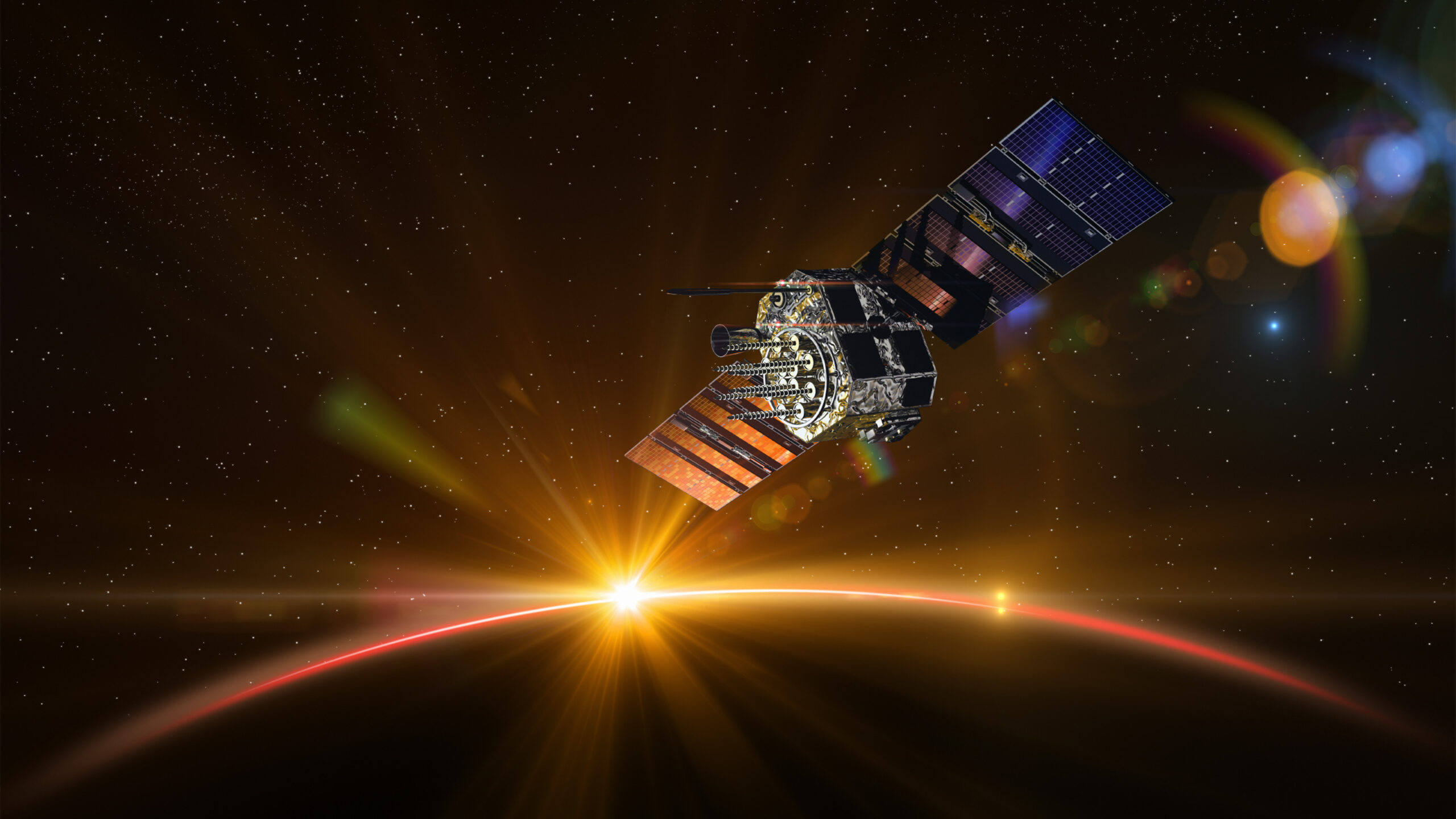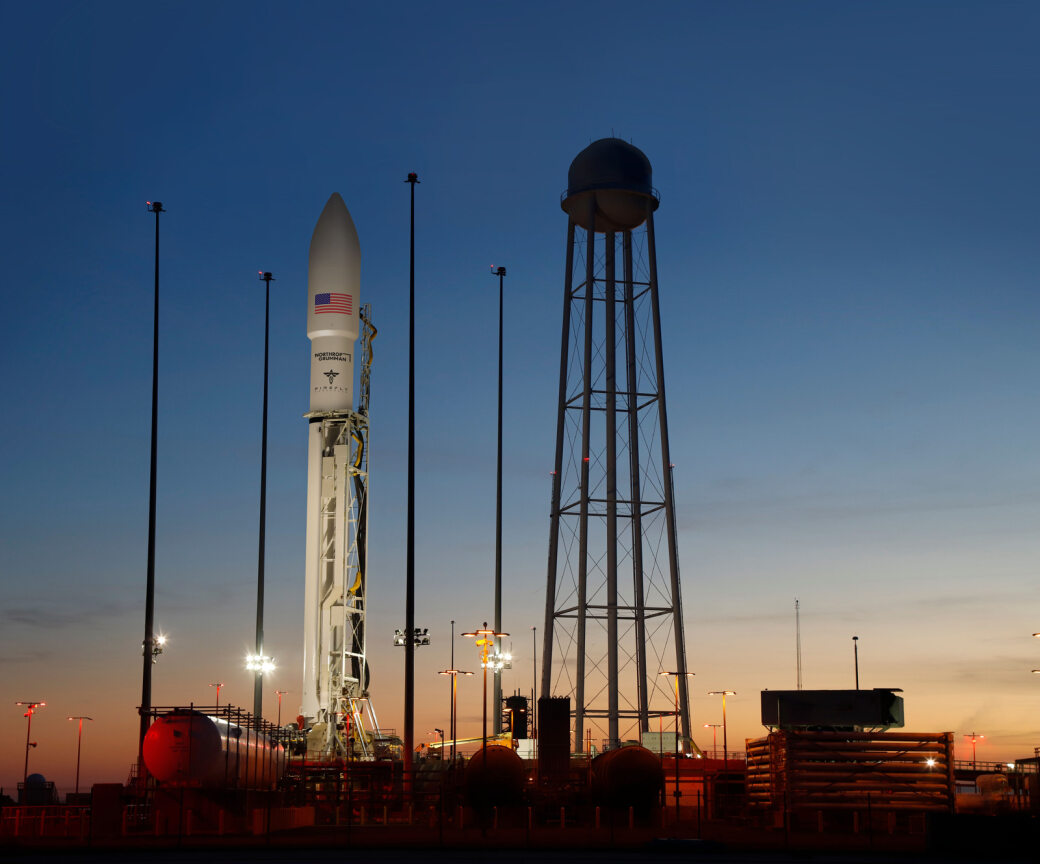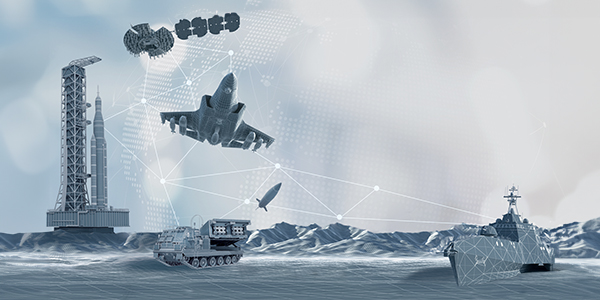
BAE Systems space satellite. Image courtesy of BAE Systems.
Since the earliest days of what’s referred to as the “space race,” space exploration has always relied on innovation to overcome the challenges posed by the harsh environment conditions, such as extreme temperatures and radiation. From the first satellite, space shuttle launch, moon landing, international space station, and beyond – space has become an even more important domain. Today, space missions have evolved to include planetary exploration, communications, national security, surveillance, and weather missions.
No matter the mission, advanced technologies are required to explore the final frontier.
Core building blocks and high reliability rad-hard electronics
Radiation-hardened (rad-hard) electronics at the component, card, and unit levels specifically designed for high-reliability are required to withstand the harsh space environment and perform long-term missions.
For decades, BAE Systems has developed and produced a wide array of rad-hard, high-reliability space products – many of which have flown on several of NASA’s exciting expeditions. From the core building blocks to complete system payloads, we provide application-specific integrated circuits (ASICs), application-specific standard products (ASSPs), microprocessors, memories, field-programmable gate arrays (FPGAs), and single-board computers (SBCs). The portfolio of space-based electronics can withstand radiation doses a million times stronger than a fatal human dose.
Our RAD750® SBC has been manufactured at the 250 nanometer (nm), 180nm, and 150nm nodes and has powered space missions for the last 20 years. Still today, it provides the computing power for NASA’s Curiosity rover that landed on Mars in 2012. Our SBCs have accumulated over 11,500 years of successful operations in space.
Expanded missions call for advanced processors
You may not realize it, but our space products help hundreds of millions of people each day with GPS, satellite radio, weather data, and other advantages across the defense and commercial sectors. Physical space and weight are at a premium on satellites, so the ability to pack more processing power into a smaller footprint is a key enabler for the future.
BAE Systems’ RAD5545® SBC is an advanced rad-hard space processor. The smaller, lower power transistors of the 45nm node support higher function and performance. This technology powers modular rad-hard, software-defined radio payloads in support of pre- or post-delivery hosting of data and signal processing applications.
And the latest processor, RAD510™ SBC offers three times the performance capability of the industry standard RAD750® microprocessor. It requires less power and has the radiation advantages of rad-hard 45nm silicon-on-isolator technology. Available to space agencies and spacecraft manufacturers, the RAD510 SBC uses software compatible with both the RAD750 SBC and RAD5545 SBC making it a flexible solution for current and future applications.
Small but mighty: compact and customizable nodes
With growing missions, design flexibility is needed to meet size, weight, power, and cost (SWaP-C) requirements. Rad-hard application specific integrated circuits (ASICs) design services give customers a competitive advantage across defense, intelligence, and commercial sectors. ASIC technologies not only resist radiation damage, but also are compatible with a wide variety of commercially available design tools. They feature rad-hard, low power, and high-reliability circuit libraries combined with proven full-chip design processes. As modular building blocks, ASICs increase design productivity, lower risk, and reduce cost.
In 2021, the Department of Defense selected BAE Systems to develop rad-hard libraries in a 12nm node and provide ASIC design services to the U.S. defense industrial base. This offering, called the RH12™ Storefront enables more transistors to fit on each chip at reduced power consumption per operation. Through ASIC design and manufacturing infrastructure, the RH12 Storefront delivers new functionality, provides robust radiation immunity and access to low-power, and high performance IP based on technology from BAE Systems and commercial providers.
Taking technologies to new altitudes
There is also a market trend for proliferated Low-Earth Orbit (pLEO) solutions. This means a large constellation of small satellites orbiting at lower altitudes to provide resilient global network coverage. These satellites are for shorter duration missions and require less shielding. To serve this market, BAE Systems uses the technology developed for radiation hardening and applies it to lower-cost, radiation-tolerant solutions. As a technology provider in the air, land, and maritime domains, we are able to take those solutions and push them up into pLEO orbits to provide more capability for space customers. Constantly innovating, the team develops products across radiation environments with advanced processing architectures and mitigation protocols.
With the changing landscape and customer need shifts, BAE Systems has adapted its technologies and processes with SWaP-C requirements at the forefront. No matter the altitude of the mission, we are ready to continue delivering highly reliable and qualified products to the space community.












